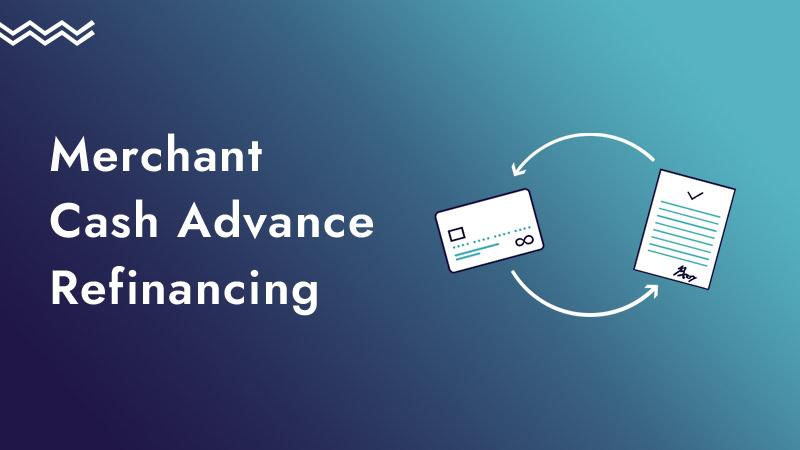
If your daily repayments are draining your cash flow or you’re juggling multiple advances, refinancing your merchant cash advance (MCA) may give your business the breathing room it needs. At MCashAdvance, we help business owners like you explore refinancing options every week, whether it’s through a renewal, a new provider, or a reverse consolidation.
This article explains when refinancing makes sense, what your options are, and how to take action.
Why Refinance Your MCA?
Refinancing an MCA can help you:
- Lower your daily holdback percentage
- Extend your repayment period
- Reduce your total cost of capital
- Replace multiple stacked MCAs with one manageable payment
- Avoid default or legal action from missed payments
We typically recommend refinancing when cash flow is tight, your revenue has dropped, or your current advance is nearly paid off and you’re looking for better terms.
Your MCA Refinance Options
Refinancing doesn’t always mean replacing your MCA with a traditional loan. Here are your main options:
1. Refinance with Your Current MCA Provider
Some providers allow a renewal advance. This replaces your existing MCA with a new one, often at the same factor rate but with a fresh term. If your original agreement includes a reconsolidation clause, you may be able to renegotiate repayment terms without taking out a new advance. You’ll usually need to show proof of reduced revenue or hardship.
2. Take a New MCA from a Different Provider
You can use a new MCA from another funder to pay off the balance of your current one. This is often used when you’re near the end of your term and have improved your sales. Look for providers offering a lower factor rate, reduced holdback, or better repayment flexibility.
3. Use a Reverse Consolidation
If you have stacked MCAs, a reverse consolidation can combine them. You’ll receive a structured daily deposit into your account to help offset the deductions from your existing advances. It’s not a loan, but it can stabilize your cash flow while you work down the debt.
4. Refinance with a Loan or Line of Credit
Some businesses qualify for an SBA loan, business term loan, or line of credit. These products can pay off your MCA and switch you to monthly payments at much lower rates. You’ll need stronger credit and more documentation, but this is usually the most cost-effective option.
What You Need to Qualify
While each lender is different, most MCA refinancing programs will ask for:
- Your remaining MCA balance
- Three to six months of bank statements
- A copy of your original MCA contract
- Your average monthly revenue
- A credit score of at least 550
- A minimum of six months in business
- A business checking account with no recent NSF activity
If you’re applying with us, we focus on your cash flow, time in business, and ability to support the new payment, not just your credit score.
How to Refinance Your MCA: 5 Key Steps
| Step | Description |
|---|---|
| 1. Review Your Balance and Terms | Check how much you owe, your remaining term, and your current holdback. |
| 2. Pre-Qualify with a Refinance Provider | Submit a quick application and recent bank statements to see what options are available. |
| 3. Submit Full Documentation | This usually includes your original MCA contract, statements, and ID. |
| 4. Compare Refinance Offers | Look at the factor rate, repayment frequency, and total cost before deciding. |
| 5. Accept, Fund, and Pay Off | Once approved, your new lender will send payoff funds to your old provider. You’ll begin repayment on your new terms. |
What Happens After You Refinance?
Once the refinance is complete:
- You’ll typically have a lower daily or weekly deduction
- Your cash flow improves, giving you space to stabilize operations
- You can now focus on long-term planning instead of scrambling to cover daily payments
We strongly recommend avoiding new advances for a while. Stacking debt again too soon can undo the progress you’ve made.
Risks and Tradeoffs to Know
Refinancing isn’t always the perfect fix. Be aware of:
- Restarting a new factor rate, which may increase total cost
- Losing access to your original provider’s renewal programs
- Some lenders charging origination or processing fees
- Possible overlap in repayments if the payoff isn’t acknowledged fast enough
- Extending the debt cycle if underlying cash flow issues aren’t addressed
Make sure you understand the full cost before signing.
Alternative Funding Options If Refinancing Doesn’t Fit
If you don’t qualify for refinancing, or prefer to avoid another MCA, consider:
- Business Line of Credit – Flexible access to capital as needed
- SBA Loans – Low-interest, government-backed loans
- Invoice Factoring – Sell outstanding invoices for cash now
- Revenue-Based Financing – Payments based on a % of monthly revenue
- Asset-Based Loans – Use business assets as collateral
- Equipment Financing – Fund new purchases or lease equipment
- Business Credit Cards – Short-term use for revolving expenses
Each of these comes with its own requirements and use cases.
If you want to compare your options side by side, see our full guide to alternatives to MCAs.
Refinancing an MCA can be a smart move when done for the right reasons. It’s not just about getting a new advance. It’s about improving your cash flow, reducing your repayment burden, and moving your business toward more stable financing. If you’re thinking about refinancing, we’re happy to walk you through your options.
Ready to Apply?
or learn more about MCA no credit check

